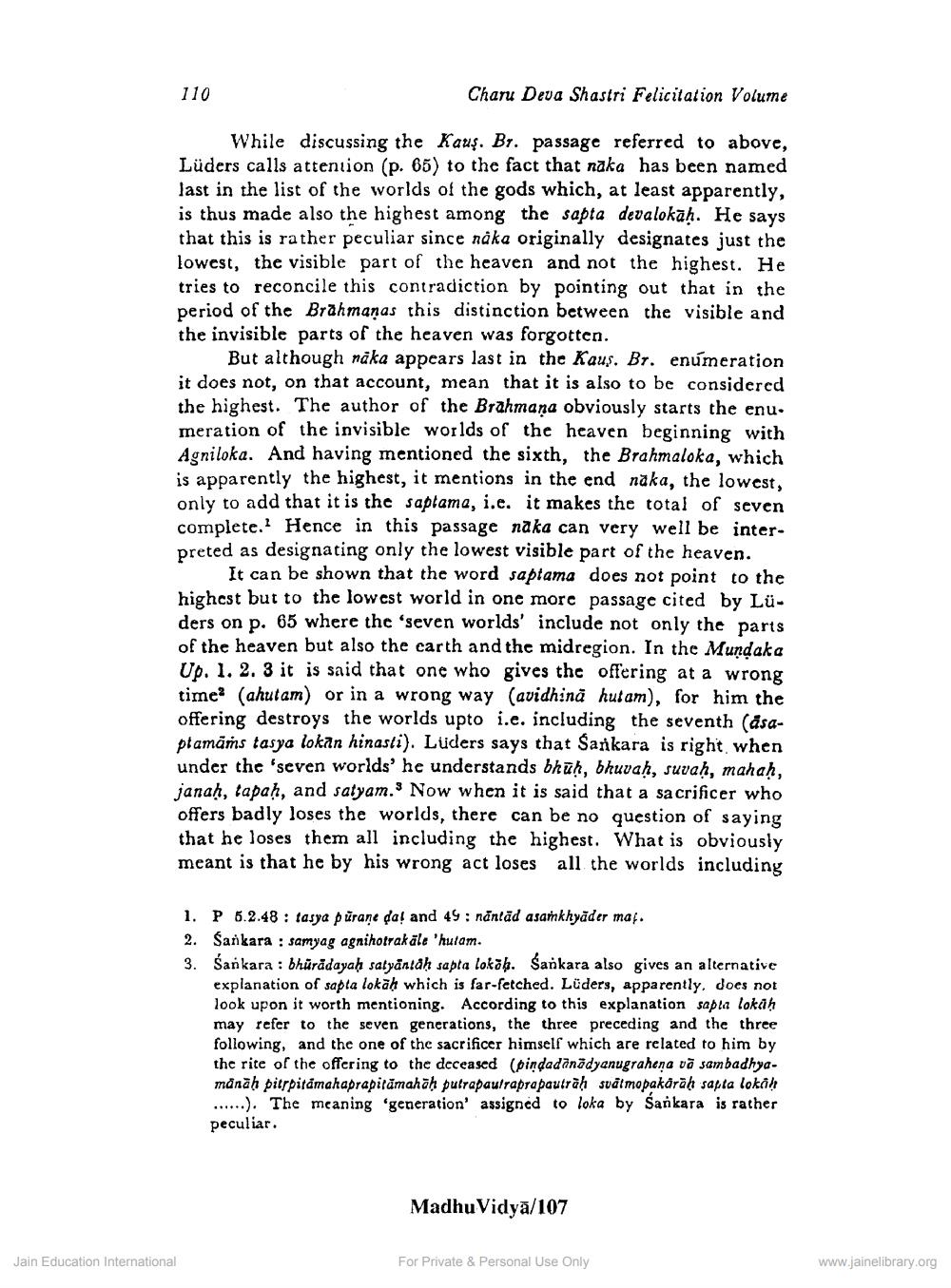________________
110
Charu Deva Shastri Felicitation Volume
While discussing the Kauş. Br. passage referred to above, Lüders calls attention (p. 65) to the fact that naka has been named last in the list of the worlds of the gods which, at least apparently, is thus made also the highest among the sapta devalokāḥ. He says that this is rather peculiar since nåka originally designates just the lowest, the visible part of the heaven and not the highest. He tries to reconcile this contradiction by pointing out that in the period of the Brahmanas this distinction between the visible and the invisible parts of the heaven was forgotten.
But although nāka appears last in the Kaus. Br. enumeration it does not, on that account, mean that it is also to be considered the highest. The author of the Brahmana obviously starts the enu. meration of the invisible worlds of the heaven beginning with Agniloka. And having mentioned the sixth, the Brahmaloka, which is apparently the highest, it mentions in the end naka, the lowest. only to add that it is the saptama, i.e. it makes the total of seven complete. Hence in this passage naka can very well be interpreted as designating only the lowest visible part of the heaven.
It can be shown that the word saptama does not point to the highest but to the lowest world in one more passage cited by Lüders on p. 65 where the 'seven worlds' include not only the parts of the heaven but also the carth and the midregion. In the Mundaka Up. 1. 2. 3 it is said that one who gives the offering at a wrong time (ahutam) or in a wrong way (avidhinä hutam), for him the offering destroys the worlds upto i.e. including the seventh (asaptamāṁs tasya lokan hinasti). Luders says that Sankara is right when under the seven worlds' he understands bhūh, bhuvah, suvah, mahah, janah, tapah, and satyam.' Now when it is said that a sacrificer who offers badly loses the worlds, there can be no question of saying that he loses them all including the highest. What is obviously meant is that he by his wrong act loses all the worlds including
1. P 6.2.48 : tasya purane da! and 49: nănlad asamkhyader maj. 2. Sankara : samyag agnihotrakāle 'hulam. 3. Sankara : bhūrădayah salyantah sapla lokok. Sankara also gives an alternative
explanation of sapta lokāh which is far-fetched. Lüders, apparently, does not look upon it worth mentioning. According to this explanation sapla lokah may refer to the seven generations, the three preceding and the three following, and the one of the sacrificer himself which are related to him by the rite of the offering to the deceased (pindadanadyanugrahena vā sambadhyamanah pitspitámahaprapitāmahāh putrapaulraprapautrāh svärmopakärāḥ sapta lokah ......). The meaning 'generation' assigned to loka by Sankara is rather peculiar.
Madhu Vidyā/107
Jain Education International
For Private & Personal Use Only
www.jainelibrary.org




